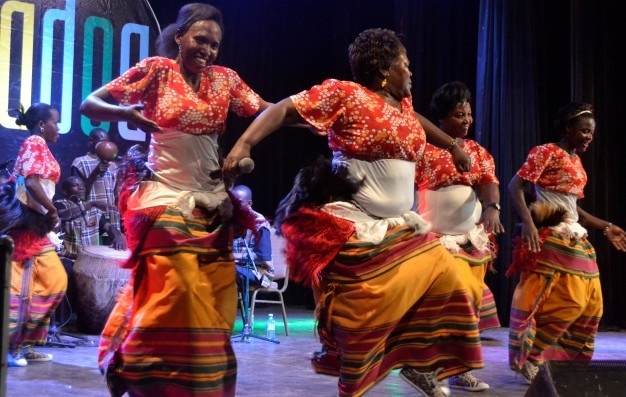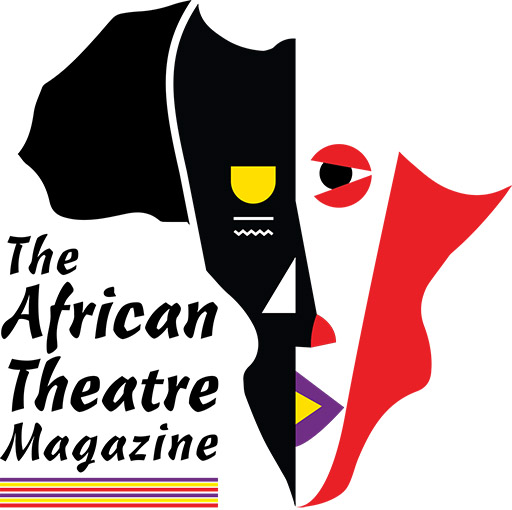In the vibrant theatrical days of the ‘70s, ‘80s, and mid-90s, a beacon of culture and creativity illuminated the Ugandan artistic scene—Namulondo Theatre.
Nestled in the burgeoning Kampala suburb of Bweyogerere, Namulondo, which translates to throne, stood as a testament to the nation’s rich artistic heritage. This was, thanks in no small part, to its intertwining with the Buganda Kingdom’s royal legacy.
With a name that evoked the regal splendour of the “throne” in the kingdom, moreover at a time the Baganda were advocating for the restoration of their Kabaka, Namulondo Theatre was a cherished artistic institution.
Much more than just a stage, Namulondo theatre was a pulsating nucleus of artistic expression, a sanctuary for theatre goers and lovers of the arts. This enchanting space transcended the realm of entertainment. It was a pilgrimage site for those who sought to connect with their cultural roots and share in the universality of human experiences through the performing arts.
The driving force behind the theatre’s existence was a man whose passion and commitment were fuelled not by the spotlight but a profound love for theatre, arts, and his kingdom—Buganda. The late Frederick Ddungu might not have been an artiste himself, but he was an enthusiast, a patron, and a true believer in the transformative power of the stage.
See also: Robert Serumaga: The Pantheon of Uganda’s Theatre in the ‘70s
A businessman and civil engineer by training, Ddungu’s devotion to the arts extended beyond the confines of the theatre walls. A man of great wealth, Ddungu shared a profound connection with Sabataka Mutebi (this was before the restoration of kingdoms).
Namulondo theatre: The genesis
During the 1977 Ugandan football season, Express FC defeated Simba FC 2–0. The club was, however, banned by Col Abdallah Nasur for alleged anti-government involvement. In the capital, a bastion for many Express fans, a switch was made from football to theatre. The theatrical boom came when the industry was smarting from the twin murders of Byron Kawaddwa and Galabuzi Mukasa.
President Amin’s rule had been mirrored in a play titled Oluyimba Lwa Wankoko. While Kawaddwa was the writer of the play, Galabuzi, the commissioner of arts in the then Ministry of Culture and Community, was questioned for allowing such a production to be staged.
Theatre became both a refuge and a platform for curiosity about the deaths, driving its popularity that was made manifest at the National Theatre.
See also: 10 Masterpieces in Ugandan Theatre
Ddungu, who was a regular at the National Theatre, seized the chance to establish Namulondo Theatre. “National Theatre was always a full house, with many people left stranded outside, missing out on productions. Ddungu would later book the same cast to his Namulondo Theatre and advertise to the stranded people outside who would later go and watch from his theatre days after,” Kiyimba Musisi, a former board member of the National Theatre, recalls.
As times passed, Namulondo Theatre captured audiences from Bweyogerere.
Namulondo Theatre’s Imposing structure
The theatre was meticulously designed, featuring a slanting lane reminiscent of the National Theatre.
Ddungu’s intention during construction was to create a theatre akin to the National Theatre. This is evident in its raised stage, advanced lighting system and high-quality curtains.
Accommodation spaces were also incorporated into the facility for artists to stay after late-night productions. The exterior of the theatre was adorned with artistic designs, depicting both performers and the Kabaka.
With a seating capacity of 350, the theatre showcased a portrait of the Kabaka to the right of its stage. The facility also boasted of the presence of a resident band (Marines Band) that played before main productions and during days without scheduled performances. This band included renowned artists such as Tonny Kalanzi, Wawawa Amigo, Kasule Saidi, Paddy Ntale, and Peter Kasaayi.
Additionally, the theatre offered a recording studio and a disco sound system.
From thought-provoking dramas addressing societal issues to comedies, the theatre vividly portrayed the nation’s identity and struggles. A plethora of productions by various theatrical groups such as Black Pearls with plays such as Ekitangaala Munzikiza, Divided Family, and Zilibasanga ne Ssanyu were staged.
See also: In Tonderai Munyevu’s Mugabe, My Dad & Me, the Personal Becomes the Political
United Players (UPS) led by Semwogerere Wankalubo showcased productions such as Ndibasa Ekitta Bonna. Kampala Negro Angels, under Ibrah Luntamye, presented plays such as Gampisisi and Seruganda Tontya.
Bakayimbira Dramactors’ Ebibala bya Nantongo, Olusozi lwa Batulege, Agaali Amakula, and Akasambatuko graced the stage. Planets showcased Birabwa, Mberewa?, and Sikabbeere, while Kezimbira Dramactors did Omuntu Muntuki? and Bwebyali Sibwebiri by Charles Kaggwa of Shevians group, among other impactful productions.
The rise and fall of Namulondo theatre
The heartbeat of Namulondo Theatre resonated with traditional dances, music and theatrical productions, connecting diverse audiences. Naakalya Nsubuga Ssaalongo, a former member of the Marines Band, recalls performances that opened and closed the stage.

Theatrical legend Mzee Christopher Mukiibi adds that productions such as Omuzadde N’omwana and Makamazibu during Easter weekends of 1983 and 1989 garnered some of his largest audiences ever.
See also: Dr. Julisa Rowe: On Drama, Ministry and Giving Back to the Next Generation
There were also challenges galore. Take Planets Dance Troupe’s Christmas Day mishap in 1988. A double booking led to their delay, disappointing fans and resulting in financial losses.
The double booking occurred at Namulondo and Victoria Hotel in Entebbe. Scheduled to start precisely at 4pm at the latter venue, the troupe faced delays in Entebbe after their initial performance.
“We were contacted and informed that the house was already full at Namulondo and the audience was running out of patience,” Annet Nandujja recalls.
As fate would have it, their mini-coaster vehicle encountered mechanical issues on their way from Entebbe. This prevented them from reaching on time, forcing them to request the theatre management to release the audience and refund their money.
Disappointed, word spread among theatregoers, leading those coming for the second performance to withhold payment, resulting in significant losses.
Sadly, the curtain fell on Namulondo Theatre in the mid-90s as societal changes reshaped Uganda’s cultural scene.
When Ddungu died in the mid-90s, his son Walugembe Ddungu, and daughter, Anitah Ddungu, who were left as caretakers lacked a deep understanding of the theatrical craft and business. It didn’t help matters that the theatrical experience was no longer the beacon of artistic excellence.
See also: Hope Azeda and Her Art that Heals
As time passed, the space that once housed Namulondo Theatre underwent various transformations, evolving into guest houses, a church, and shops as seen today.
Which way for local theatre?
The telling of Namulondo Theatre’s rise and fall comes at a time Uganda is having an inflection point insofar as preserving its heritage sites is concerned.
It’s evident that theatre’s heyday has faded in the rearview mirror. The numbers in the few Ugandan theatres still standing tell a story. And not a good one. In what shape will a new lease of life arrive?
“The theatre of old was informative, educational, entertaining, and skilfully held those in power accountable. Today’s theatre often misses these marks, as individuals pursue personal interests. This has led true theatre enthusiasts to disengage due to perceived lack of value,” renowned actor and playwright Christopher Mukiibi reasons, adding that arts leadership should reintroduce previous generations of theatre practitioners to not only reclaim lost glory but mentor emerging talents.
Ibrahim Sematimba, a respected actor popularly known as Kojja Kagatto, also conveys apprehensions about the theatre’s future.
See also: Uganda’s Elvania Namukwaya who Broke the Glass Ceiling of Theatre
“The absence of genuine dedication to theatre and the arts from leadership is evident. Why is our industry still tethered to the Gender ministry and not granted an independent ministry? The amalgamation with Gender hampers growth, and the lack of political will is apparent,” he contends.
Planets Theatre group’s Kiyimba Musisi attributes the swift decline of theatre to the allure of alternative entertainment options such as musical shows in open spaces and hotels.
Musisi says a revival of educational theatrical projects targeting young audiences, primarily in schools, will ignite a renaissance.
“We must adapt theatre to contemporary times and use every available means, including technology. We should take drama to television, social media, and all accessible platforms for wider consumption,” playwright John Ssegawa advises.
This article was published by Monitor under the title, Namulondo Theatre:Gone with the wind and has been reposted here with the writer’s permission.








Discussion about this post